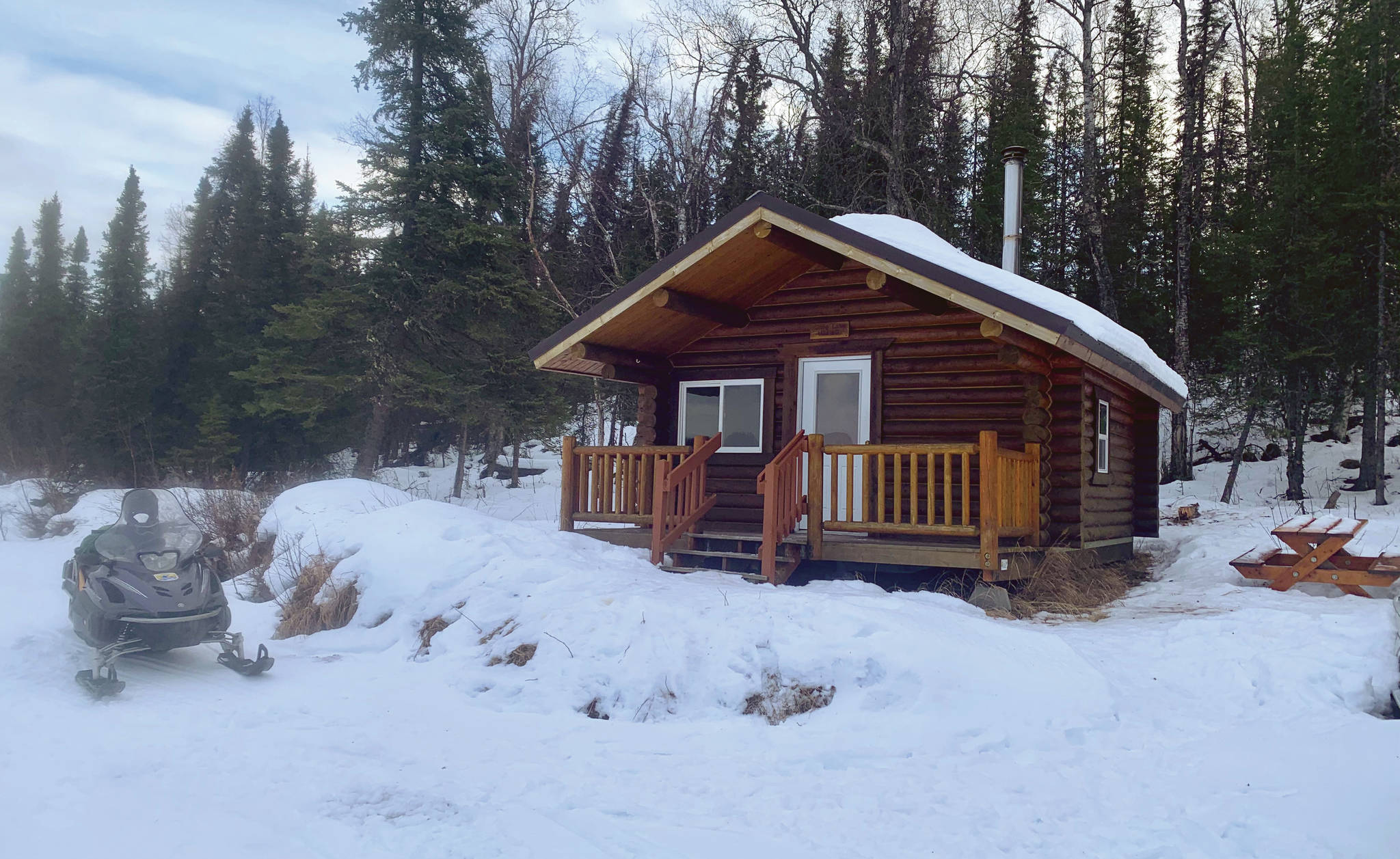If you spend any time in the backcountry it’s bound to happen: an ankle sprain halfway into a day hike, the afternoon blowup that unexpectedly turns a glassy lake into a tempest, the unseen overflow that mires your snowmachine while you’re far from the trailhead.
It’s really not a question of if, but when, you’re going to get stuck, delayed or stranded and need to either self-rescue or keep yourself and your party safe until help arrives.
Right around this time last year I had an experience that reminded me why I lug around a stuffed backpack when I venture out, even on day trips. It often feels like overkill, but I’ve heard enough stories to take this adage seriously: When venturing into the backcountry, “it’s better to have it and not need it than to need it and not have it.”
I had planned a quick snowmachine trip to the Snag Lake public use cabin, which is only about an eight-mile ride. I had ridden in to the cabin the week before and noticed the door wasn’t closing quite right, so I was heading back with some tools and supplies to fix it.
It had snowed a good bit the night before and was still snowing as I left the shop, so in addition to my normal survival gear I brought along my heavier sleeping bag and extra food, knowing that having to spend the night was a real possibility.
Turns out that’s exactly what happened.
What is normally a 30- to 40-minute ride turned into a three-hour slog as I repeatedly got stuck in the deep snow. The wind had blown in my tracks from the previous week so I was breaking a new trail most of the way, and I was pulling a sled that further weighed me down.
Once I finally arrived at the cabin I radioed headquarters to let them know I had made it and was going to spend the night. There was no way I was going to fix the door and make it back to the truck before dark.
I got a fire going in the wood stove and hung up my soaked clothes to dry. After I dried off and warmed up I was able to fix the door and then spent a pretty sweet night in the backcountry.
The ride out the next day was mostly uneventful as I followed my track from the previous day, but the experience served as a good opportunity for me to reflect upon and reconsider what I bring along with me and when.
I’m a firm believer that “the more you know, the less you need” but only up to a certain point. I’ve witnessed amazing feats accomplished with just paracord and duct tape along with a healthy dose of creativity and ingenuity, but there are some items that are just too valuable or convenient not to have on hand.
Some of the staples in my pack when I head into the backcountry include extra food and water (or a way to purify water); a multi-tool; waterproof matches, a lighter and fire starter; a warm change of clothes, including socks, gloves and a winter hat; first aid kit; bear spray when they’re out; my cellphone and satellite messenger; a headlamp with extra batteries; an ultralight stove and fuel; and some of that paracord and duct tape.
Longer trips farther afield require more gear like a sleeping bag, sleeping pad, more food and water, a pack of playing cards, and a solar charger for electronics.
A satellite messenger is a really nice device to have and has replaced sat phones for most of our operations. We use an InReach, but there are other models on the market as well. Basically it allows your cellphone to send and receive text messages, including an SOS, anywhere on earth.
However you decide to communicate with those back home, make sure to let someone know in advance of your plans, when to expect you back and who to contact if you’re overdue. The InReach also has a GPS and mapping capability that come in handy when you’re trying to stay found.
Regardless of how powerful a tool these satellite communication devices can be, they’re not intended to be a replacement for good trip planning and preparation and should not be solely relied upon to keep you safe and alive.
Beyond what supplies we have on hand are the knowledge and skills we possess, and to that end I want to recommend taking a wilderness first aid or first responder course. One of the best tools that I was given to get myself prepared was the opportunity to take a wilderness first responder course a couple of years ago.
The class was taught by an incredibly skilled teacher from Alaska who really pushed us to prepare for any number of medical situations that can occur in the backcountry and how to respond appropriately. Beyond the wide-ranging course material, the class reminded me and taught me new things about myself, my experiences and inclinations. It was hands down the most intense and beneficial training I’ve ever been involved in.
There is an old proverb regarding tree planting that goes something like, “The best time to plant a tree was 20 years ago. The second best time is right now.” With this in mind there is no better time to get yourself and your family prepared for your upcoming outdoor adventures than today.
Daniel Saxton is the cabin manager at Kenai National Wildlife Refuge. Find more Refuge Notebook articles (1999–present) at https://www.fws.gov/refuge/Kenai/community/refuge_notebook.html.
By Daniel Saxton
Kenai National Wildlife Refuge



